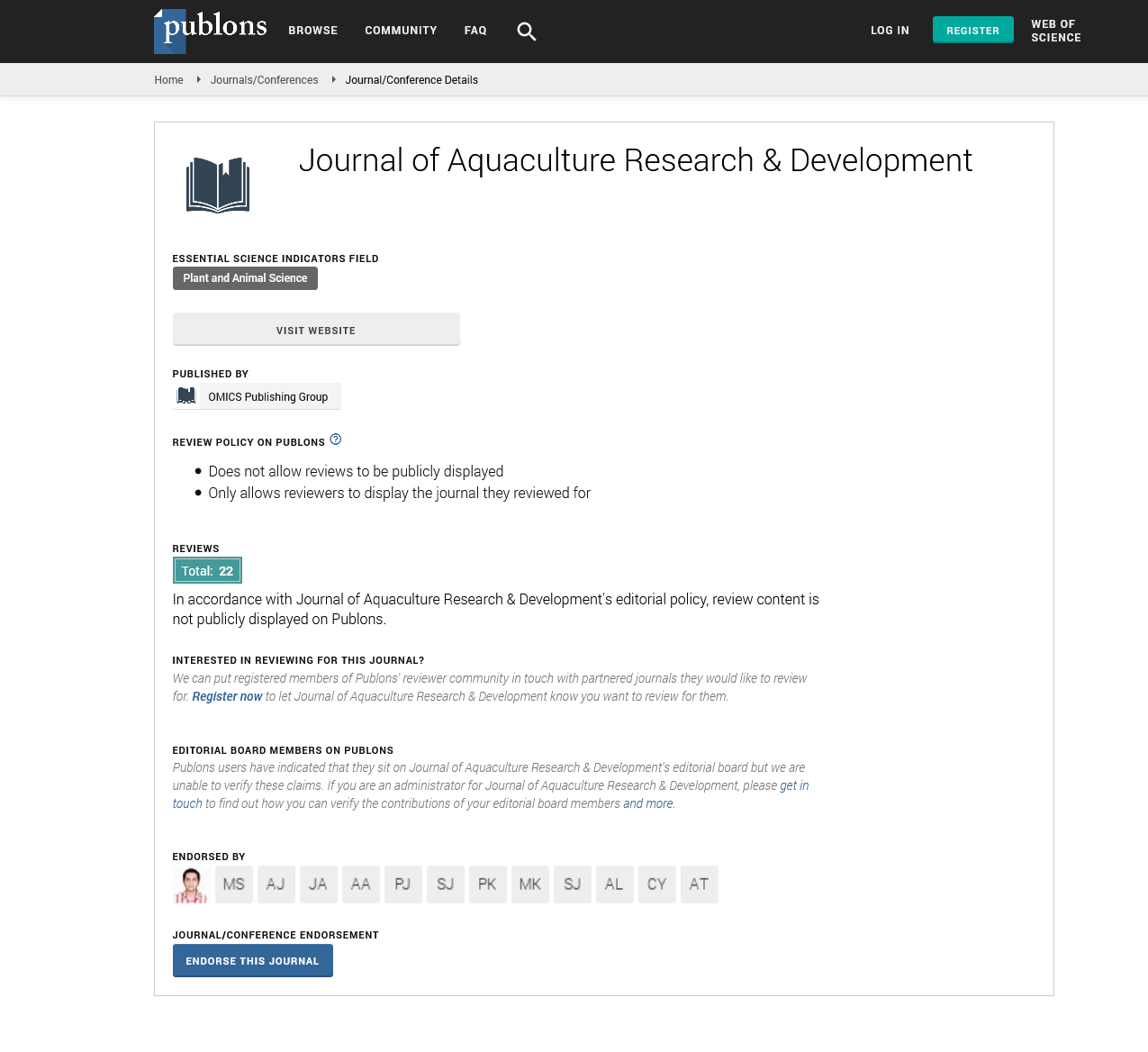Indexed In
- Online Access to Research in the Environment (OARE)
- Open J Gate
- Genamics JournalSeek
- JournalTOCs
- Scimago
- Ulrich's Periodicals Directory
- Access to Global Online Research in Agriculture (AGORA)
- Electronic Journals Library
- Centre for Agriculture and Biosciences International (CABI)
- RefSeek
- Directory of Research Journal Indexing (DRJI)
- Hamdard University
- EBSCO A-Z
- OCLC- WorldCat
- Scholarsteer
- SWB online catalog
- Virtual Library of Biology (vifabio)
- Publons
- MIAR
- University Grants Commission
- Euro Pub
- Google Scholar
Useful Links
Share This Page
Journal Flyer

Open Access Journals
- Agri and Aquaculture
- Biochemistry
- Bioinformatics & Systems Biology
- Business & Management
- Chemistry
- Clinical Sciences
- Engineering
- Food & Nutrition
- General Science
- Genetics & Molecular Biology
- Immunology & Microbiology
- Medical Sciences
- Neuroscience & Psychology
- Nursing & Health Care
- Pharmaceutical Sciences
Opinion Article - (2025) Volume 16, Issue 7
Balancing Productivity and Sustainability in Fish Farming
Soohee Park*Received: 27-Jun-2025, Manuscript No. JARD-25-30067; Editor assigned: 30-Jun-2025, Pre QC No. JARD-25-30067 (PQ); Reviewed: 14-Jul-2025, QC No. JARD-25-30067; Revised: 21-Jul-2025, Manuscript No. JARD-25-30067 (R); Published: 28-Jul-2025, DOI: 10.35248/2155-9546.25.16.1015
Description
Fish and shellfish culture has transitioned from marginal operations to a central role in many food systems. While output and efficiency often dominate discussions, maintaining a balance between productivity and sustainability remains the true challenge. Without this balance, short-term gains may lead to long-term losses.
The first tension lies between stocking density and survival. High densities can maximize yield but often result in increased stress, higher disease incidence and weakened immune responses. Many farms respond by increasing chemical treatments or antibiotic use. Although these measures may suppress disease temporarily, they degrade water quality and contribute to the development of resistant pathogens. Moderate stocking densities combined with frequent health inspections provide a safer and more sustainable approach than pursuing maximum numbers.
Feed choices are another critical factor. Feeds rich in fish meal and fish oil promote growth but rely heavily on wild marine stocks. Continued dependence on such inputs could minimize the net ecological gains of aquaculture expansion. Shifting a larger portion of feed components toward sustainable alternatives such as plant proteins, microbial proteins and insect meal though potentially costlier initially, reduces pressure on wild fisheries and enhances system resilience.
Water turnover presents further challenges. Systems with heavy water exchange dilute waste but consume large amounts of water, which is unsustainable in water-scarce or upstream regions. Closed or semi-closed recirculating systems conserve water but require higher energy input and maintenance. Hybrid systems that balance water flow with reuse, adapted to regional water availability and infrastructure, offer a more viable solution.
The emergence of disease often remains underappreciated. Even well-established farms may be vulnerable to new pathogens or shifts in microbial communities. Monitoring should extend beyond known pathogens to include changes in microbial diversity, as such shifts can destabilize environmental conditions. Early detection proves more effective than reactive measures once symptoms appear. Investments in diagnostics, rapid testing and staff training are as crucial as structural capacity development.
Genetic and species selection significantly influence resilience. Monocultures are susceptible to collapse, whereas introducing tolerant species or managing multiple stock types can buffer farms against change. For instance, polyculture involving finfish, shellfish and seaweed enables some waste reuse and ecological moderation. Combining species with complementary behaviors helps maintain water quality and reduces risk.
Market dynamics also influence production models. Buyer demand for uniform, high-grade fish encourages intensive, homogeneous systems, increasing vulnerability to disease outbreaks and market fluctuations. Promoting differentiated products such as local varieties, mixed species and value-added processing can reduce reliance on narrow market demands and improve economic stability.
Equity and participation remain essential considerations. Many small producers face barriers to credit, insurance, training and market access, while larger firms benefit from advantages in cost, technology and market reach. Without adequate support, inequality may intensify and small farms risk disappearance. Public and cooperative support systems are vital to enable small and medium farms to adopt better practices without disproportionate risk.
Adaptation to climate variability must be integrated into aquaculture design. Temperature fluctuations, changing precipitation patterns, salinity shifts and extreme events will affect water quality and species stress. Rigid infrastructure may not withstand such changes. Flexible systems incorporating movable cages, modular ponds and adjustable water inflows can enhance adaptability. Additionally, selecting species or strains tolerant to a broader range of conditions reduces vulnerability.
Finally, strong community relationships and stakeholder collaboration improve outcomes. Aquaculture farms do not operate in isolation; upstream and downstream users share water, nutrients and environmental impacts. Ignoring these connections can lead to conflict and environmental degradation. Community water councils, shared monitoring programs and regional coordination help ensure that one farm’s waste does not harm neighboring operations.
The high production must be aligned with long-term ecological and social stability. Aquaculture systems that focus excessively on yield risk collapse, conflict and environmental harm. Balanced approaches that respect ecological limits, promote adaptability and distribute responsibility offer the most sustainable path forward.
Citation: Park S (2025). Balancing Productivity and Sustainability in Fish Farming. J Aquac Res Dev. 16:1015.
Copyright: © 2025 Park S. This is an open access article distributed under the terms of the Creative Commons Attribution License, which permits unrestricted use, distribution, and reproduction in any medium, provided the original author and source are credited.

